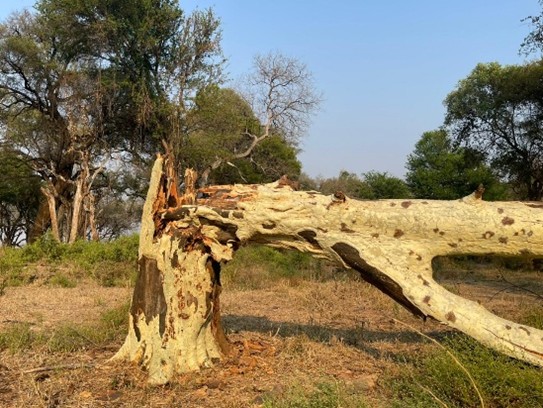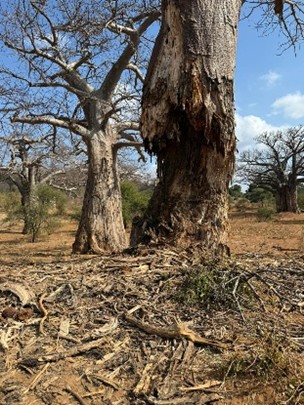By Richard Sowry. Edited by John Ledger
In the riverine forest of Pafuri there is not a single top canopy tree that is not scarred by elephant. Most of these trees are in the process of dying, and the rest are barely coping. The only species of top canopy tree they do not touch are the Sausage Trees, and they are few and far between anyway.
Elephant have also cleaned out the understory creepers and scrub. I have been birding seriously since the early 1990s, and in the late 90s spent a lot of time birding in the Pafuri area. The dawn chorus of bird song during mid-summer in the 90s used to be deafening, it was so loud. Today it is not. You still hear the same species, but there is a representation of only a few individual birds, and it is very far from deafening.
I would like to share some FACTS relating to the issue. Firstly, FACTS differ from BEST AVAILABLE KNOWLEDGE. Best available knowledge is what we find in scientific papers and the like, and it should be continually changing as we learn more. But FACTS remain.
Simply put, Wildlife Management is the ‘simulation of what’s missing yet essential for healthy ecosystem functioning’. To rationalise what’s missing in modern day KNP is easier to assess from the perspective of rather what’s changed, since a time when we believe the system was sustainable. So, for argument’s sake and covering all bases, let’s go back 300 years. There are basically two major issues that have changed in the KNP:
- The animals can no longer freely migrate and follow rainfall and food gradients – this in short results in selective and continual feeding without interruption.
- Since 1995 the elephant and the hippo of the KNP no longer have a natural predator. For many thousands of years, and before colonial times, the only African predator of elephant and hippo of any significant consequence has been man.
The effect of a predator is that it reduces the population of the prey species and, very importantly, it also changes the behaviour of the prey species. The prey aggregate (herd) and they move in response to predation. No naturally behaving prey species lives and feeds in the same place where its predator lives.
The situation in the KNP at present is unnatural, to say the least. Our elephant population is unnaturally high, and they are behaving unnaturally. Man used to live along the major river systems, and as a result the riverine vegetation was protected from elephant. Today elephant move up and down a river during the day, feeding at will. Historically they would have probably drunk at night and during the day moved inland, away from the river where man lived. They are the largest represented biomass of mammal in the park and they eat approximately 95% of all plant species, so the consequences of them no longer having a natural predator are huge.
It is interesting to note that when I showed Ron Thomson the Pafuri Riverine in 2021, which he had never visited before, he remarked that “This reminds me of the Chobe River when I visited it in the 1960s”. We all know what the Chobe Riverine and associated biodiversity in Botswana looks like to today…
If we do not manage elephant, the riverine forest of Pafuri and the associated biodiversity will not exist in 15 years. Simply, our refusal to fulfil our natural role is not fair on other biodiversity.











